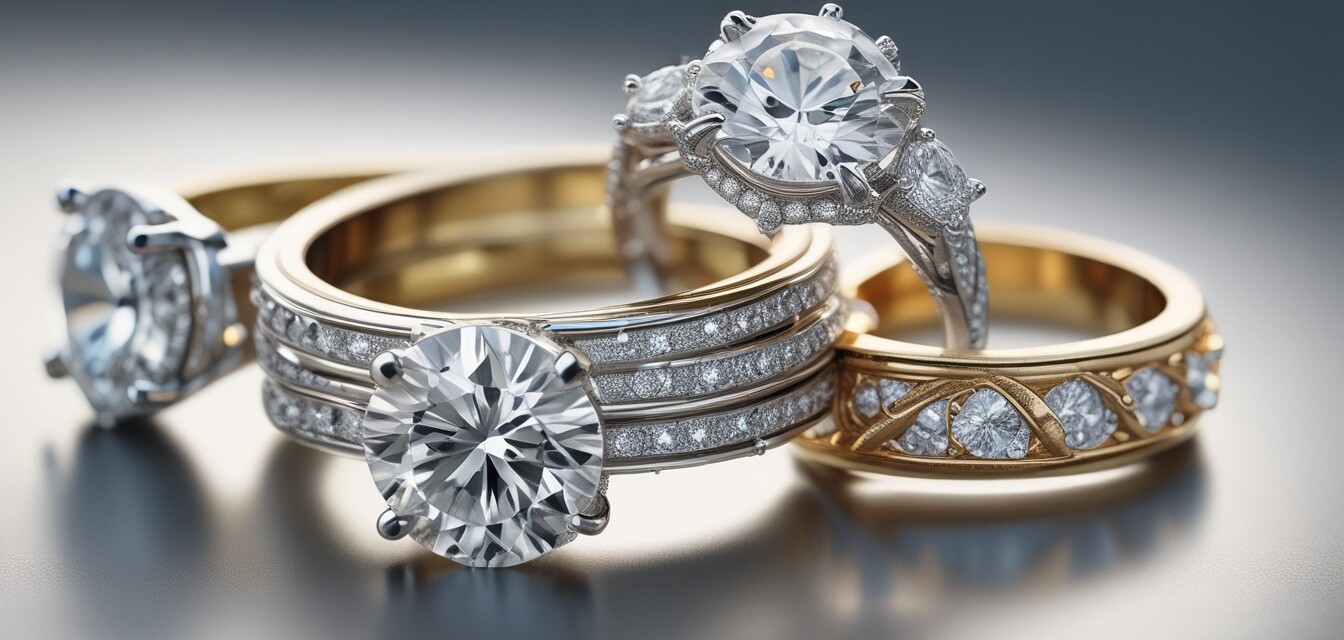
The Evolution of Engagement Rings Through History
Key Takeaways
- Engagement rings have a rich history that reflects societal changes.
- Designs have evolved through different eras, influenced by culture and tradition.
- Many designs have symbolic meanings attached to them.
- Understanding these trends empowers buyers to make informed decisions.
Engagement rings have become a significant symbol of love and commitment, evolving through various styles and trends over the centuries. From simple bands to intricate designs featuring precious stones, the journey of the engagement ring mirrors broader societal changes, cultural values, and advancements in craftsmanship.
A Brief History of Engagement Rings
The tradition of engagement rings traces back to ancient civilizations where they were used as symbols of commitment. Let’s take a look at how this practice has evolved over the ages.
| Era | Style | Key Features |
|---|---|---|
| Ancient Rome | Simple Iron Bands | Iron represented strength; bands were often engraved. |
| Middle Ages | Gemstone Rings | Considered a symbol of wealth; featured sapphires, emeralds. |
| Victorian Era | Intricate Designs | Gold settings, ornate designs, and romantic motifs. |
| Art Deco (1920s) | Geometric Styles | Bold shapes, colorful gemstones, and platinum settings. |
| Modern Day | Custom Designs | Personalized choices; emphasis on sustainability. |
Engagement Ring Styles Over the Decades
The evolution of engagement rings aligns with changes in fashion and societal norms. Below are a few notable styles by decade.
1900s - 1920s: The Rise of Tradition
The early 20th century marked a formalization of engagement ring traditions. Diamond engagement rings became popular due to the discovery of diamond mines in South Africa.
1930s - 1950s: Post-War Affluence
Following World War II, the demand for more lavish designs surged. Diamonds became a symbol of success and affluence, leading to more elaborate settings.
1960s - 1980s: The Era of Romanticism
During the 1960s, creativity in jewelry design soared. Many engagement rings featured unique gemstones, symbolizing individuality and romance.
1990s - 2000s: The 'Bridal Frenzy'
The end of the century saw a boom in bridal markets, pushing the limits of creativity. Dual-toned rings and vintage-inspired designs made a bold statement.
2010s to Present: Personalization and Sustainability
The current trend focuses on personalized designs that reflect the couple’s unique story. Sustainable practices are also at the forefront, with many opting for ethically sourced materials.
Symbolism Behind Engagement Rings
Throughout history, engagement rings have carried significant meaning. Here are some prevalent symbols associated with different designs:
- Diamonds: Purity and strength
- Colored Gemstones: Individuality and creativity
- Platinum Settings: Durability and luxury
- Vintage Styles: Heritage and timelessness
Modern Engagement Rings: Trends and Inspirations
As consumers look for more meaningful options, several modern trends have emerged:
Popular Modern Trends
- Conflict-free diamonds and ethical sourcing
- Unique shapes such as oval, pear, and cushion cuts
- Mixing metals for a personalized touch
- Meaningful engravings or motifs
Conclusion
The journey of engagement rings is a fascinating tale of tradition, evolution, and personal expression. Understanding this history equips buyers with the knowledge to choose a ring that truly resonates with their love story. Whether you prefer a traditional diamond or a unique vintage design, each ring tells a story that is as eternal as the commitment it represents.
For more on choosing the perfect ring, check our Buying Guides section or explore trends in our News and Trends category.
Pros
- A variety of styles to express personal taste.
- Meaningful symbolism behind different gems and designs.
- Customization options allow for unique pieces.
Cons
- Can be a significant financial investment.
- Trends may change, affecting the perceived value.
- Customization may take additional time and cost.